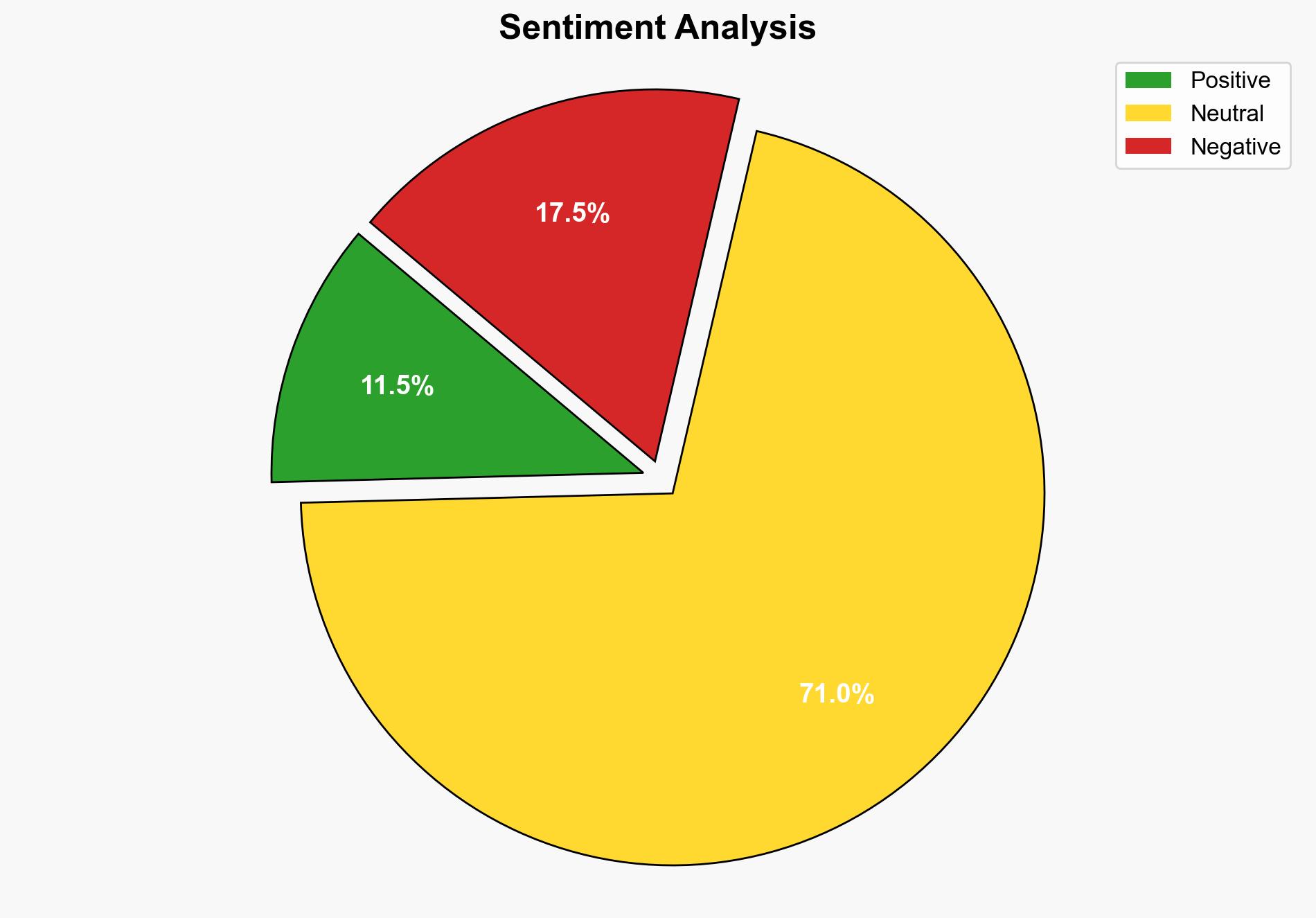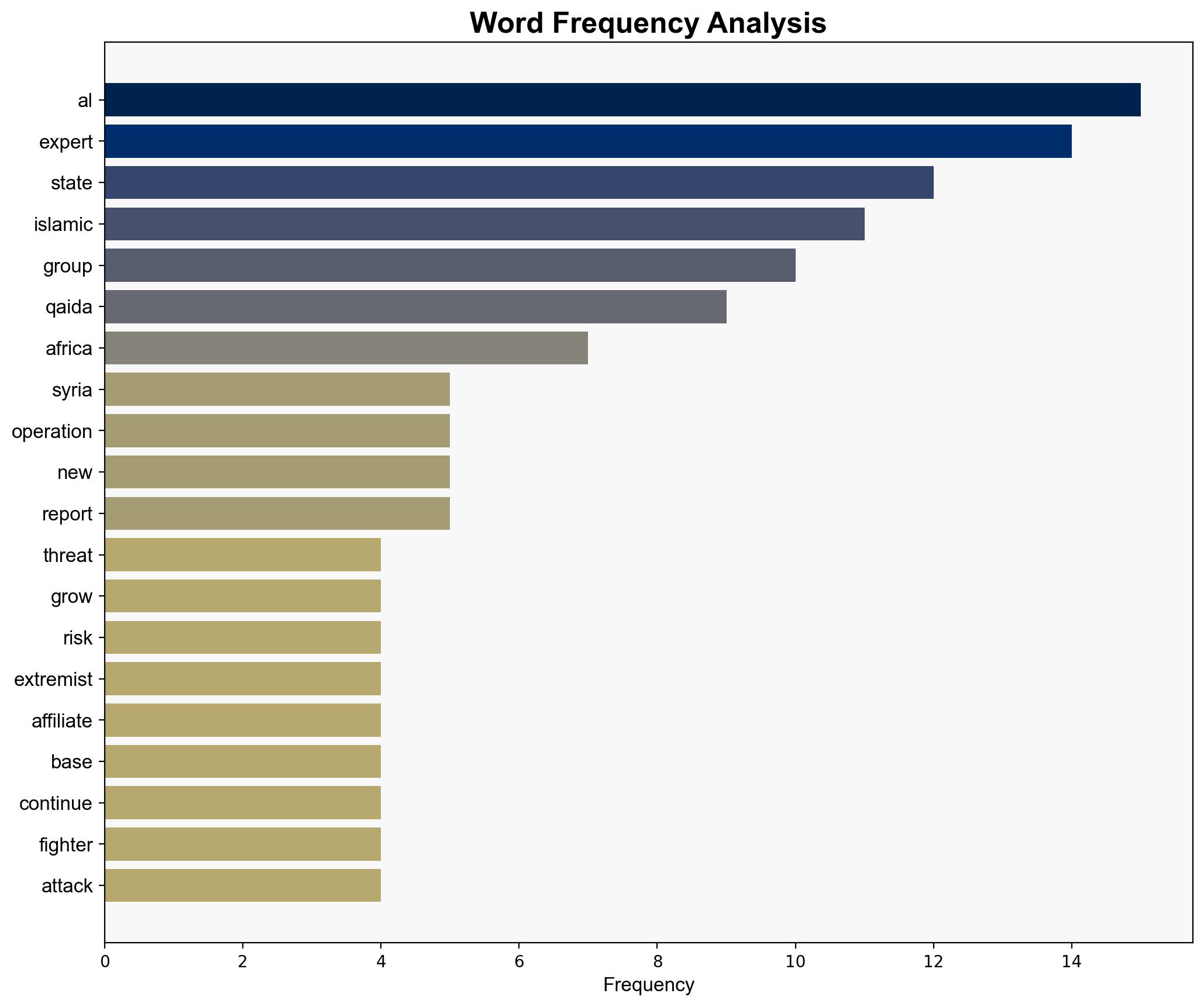Islamic State and al-Qaida threat is intense in Africa with growing risks in Syria UN experts say – ABC News
Published on: 2025-07-31
Intelligence Report: Islamic State and al-Qaida threat is intense in Africa with growing risks in Syria UN experts say – ABC News
1. BLUF (Bottom Line Up Front)
The threat posed by Islamic State (IS) and al-Qaida affiliates is intensifying in Africa, particularly in the Sahel region, and is growing in Syria. The most supported hypothesis suggests that these groups are leveraging regional instability and exploiting local grievances to expand their influence. Confidence level: Moderate. Recommended action: Enhance regional counter-terrorism cooperation and intelligence sharing, focusing on disrupting financial networks and recruitment channels.
2. Competing Hypotheses
Hypothesis 1: IS and al-Qaida are strategically shifting focus to Africa and Syria due to increased counter-terrorism pressure in the Middle East, aiming to establish new operational bases and expand influence.
Hypothesis 2: The increased activity in Africa and Syria is primarily opportunistic, driven by local dynamics and the weakening of state structures, rather than a coordinated strategic shift by IS and al-Qaida.
3. Key Assumptions and Red Flags
Assumptions:
– Both hypotheses assume that IS and al-Qaida have the capability to adapt and exploit regional instability.
– Hypothesis 1 assumes a coordinated strategic intent, while Hypothesis 2 assumes opportunistic behavior.
Red Flags:
– Lack of detailed intelligence on the internal decision-making processes of these groups.
– Potential bias in interpreting local conflicts as part of a broader strategic plan.
4. Implications and Strategic Risks
The expansion of IS and al-Qaida in Africa and Syria could lead to increased regional instability, with potential spillover effects into Europe and the Americas. The use of social media and encrypted messaging for radicalization poses a cyber threat. Economic impacts include disrupted trade routes and increased security costs. Geopolitically, this could strain international relations and complicate peacekeeping efforts.
5. Recommendations and Outlook
- Enhance intelligence sharing and counter-terrorism collaboration among affected regions.
- Disrupt financial networks supporting these groups through targeted sanctions and financial tracking.
- Scenario-based projections:
- Best Case: Successful international cooperation leads to containment and reduction of IS and al-Qaida influence.
- Worst Case: Escalation of violence and territorial gains by these groups, leading to regional destabilization.
- Most Likely: Continued sporadic attacks and territorial skirmishes, with gradual expansion of influence.
6. Key Individuals and Entities
– Ahmad al-Sharaa: Newly appointed interim president in Syria, leading rebel group Hayat Tahrir al-Sham.
– Jamaat Nasr al-Islam wal Muslimin (JNIM): Al-Qaida affiliate expanding operations in West Africa.
– Al Shabab: Al-Qaida affiliate in East Africa, maintaining resilience and operational ties with Yemen’s Houthi rebels.
7. Thematic Tags
national security threats, cybersecurity, counter-terrorism, regional focus





